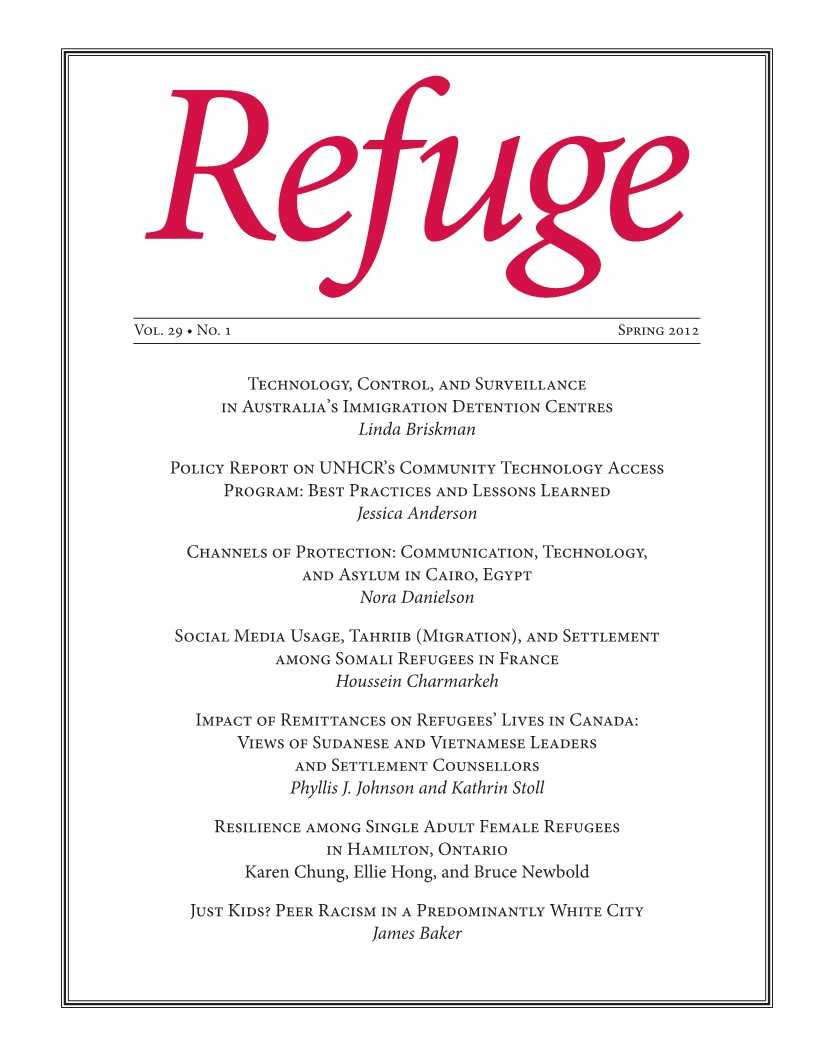The Location of Refugee Female Teachers in the Canadian Context: “Not Just a Refugee Woman!”
DOI:
https://doi.org/10.25071/1920-7336.37522Keywords:
Canada, Yugoslavian refugees, refugee women, teachers, resettlement, identity, intersectionality, systematic barriers, social agency, oppressionAbstract
This paper explores intersectionality of oppression and social agency in refugee narratives of four female teachers from Yugoslavia who immigrated to Ontario and Quebec between 1994 and 1998. These narratives reveal a number of systemic barriers participants encountered in their new country, such as lack of coordination between immigration and settlement services, lack of information about the teacher recertification process, systemic ignorance towards international teaching credentials and experiences, and a number of settlement practices that pushed the participating women teachers to the margins of the Canadian educational system. In addition to reporting a number of systemic barriers to teaching, these women also revealed self-imposed psychological and culturally constructed barriers to settlement such as personal perceptions of having limited language competencies, of being “too old” to continue education, and of remaining permanent outsiders to Canadian ways of being. Women also discussed their choices and priorities in terms of their personal and professional lives and the ways in which these preferences facilitated and/or hindered their integration in the Canadian education system and society. The paper challenges the master narrative of refugeehood in Canada by exposing the ways in which race, class, gender, age, ethnicity, and professional identity, in addition to refugeehood, shape the oppression and the privilege of refugee women in the Canadian context.
Metrics
Downloads
Published
How to Cite
Issue
Section
License
Copyright (c) 2013 Snežana Ratković

This work is licensed under a Creative Commons Attribution-NonCommercial 4.0 International License.
Refuge authors retain the copyright over their work, and license it to the general public under the Creative Commons Attribution-Non Commercial License International (CC BY-NC 4.0). This license allows for non-commercial use, reproduction and adaption of the material in any medium or format, with proper attribution. For general information on Creative Commons licences, visit the Creative Commons site. For the CC BY-NC 4.0 license, review the human readable summary.







